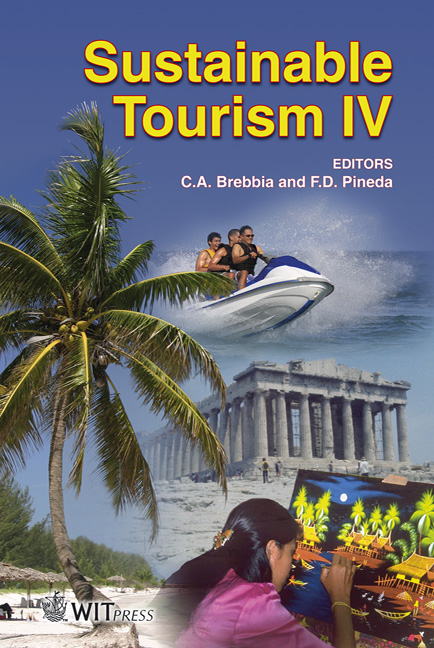Planning And Management Strategies In Tourist Areas: Guidelines For A Sustainable Development Of The Durres Bay District
Price
Free (open access)
Transaction
Volume
139
Pages
10
Page Range
159 - 168
Published
2010
Size
3,581 kb
Paper DOI
10.2495/ST100141
Copyright
WIT Press
Author(s)
C. Cosmi, S. Fiore & P. Ragone
Abstract
In the framework of the LIFE project \“Capacity Building for Sustainable Tourism Development – CBSTD”, a general purpose methodology was defined to promote sustainable tourism activities based on an integrated development of the territory. The central issues were to valorise the endogenous resources and to encourage a participative process among citizens, stakeholders and decision makers, by identifying key objectives for a sustainable development of the whole territory, in actuation of local Agenda 21. The methodological approach is based on the integration of two methodologies, the \“Carrying Capacity Assessment- CCA” and the IEA- ETSAP \“Advanced Local Energy Planning – ALEP”, which is widely used in different contexts. The analysis of the study area pointed out that tourism strategies development should keep up with the implementation of plans for the revitalization of the territory, promoting major investments in infrastructures. The methodology can be applied in a broad variety of situations and is finalised to the identification and elimination of bottlenecks for the attribution of certified environmental labels by public and private owners. Keywords: sustainable tourism, carrying capacity assessment, ALEP methodology, integrated territorial planning. 1 Introduction Tourism represents an increasing economic resource for many countries, especially potential EU candidate countries, to be developed with a precautionary approach aimed at increasing the benefits to the local population
Keywords
sustainable tourism, carrying capacity assessment, ALEP methodology, integrated territorial planning





